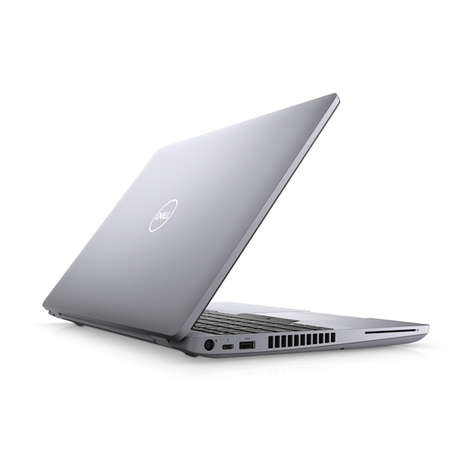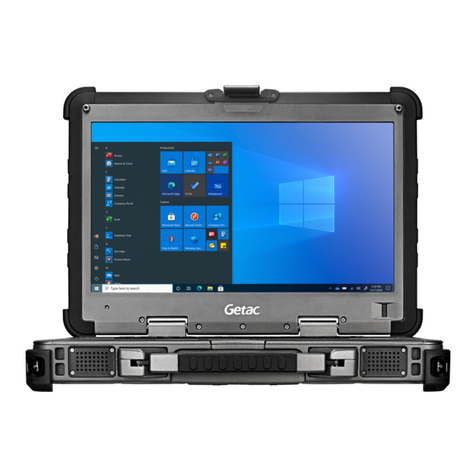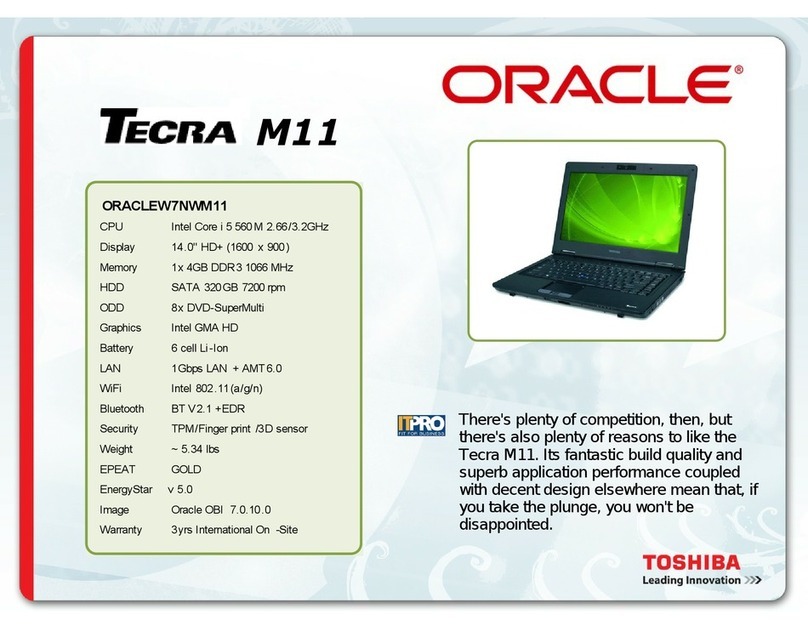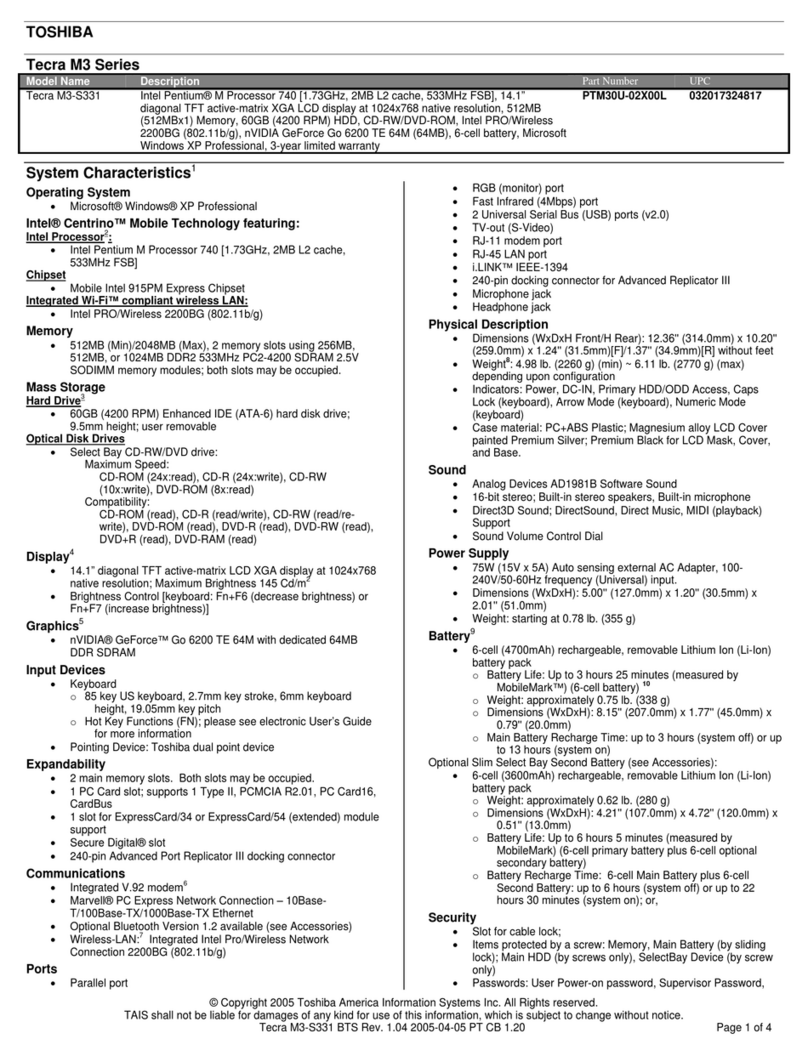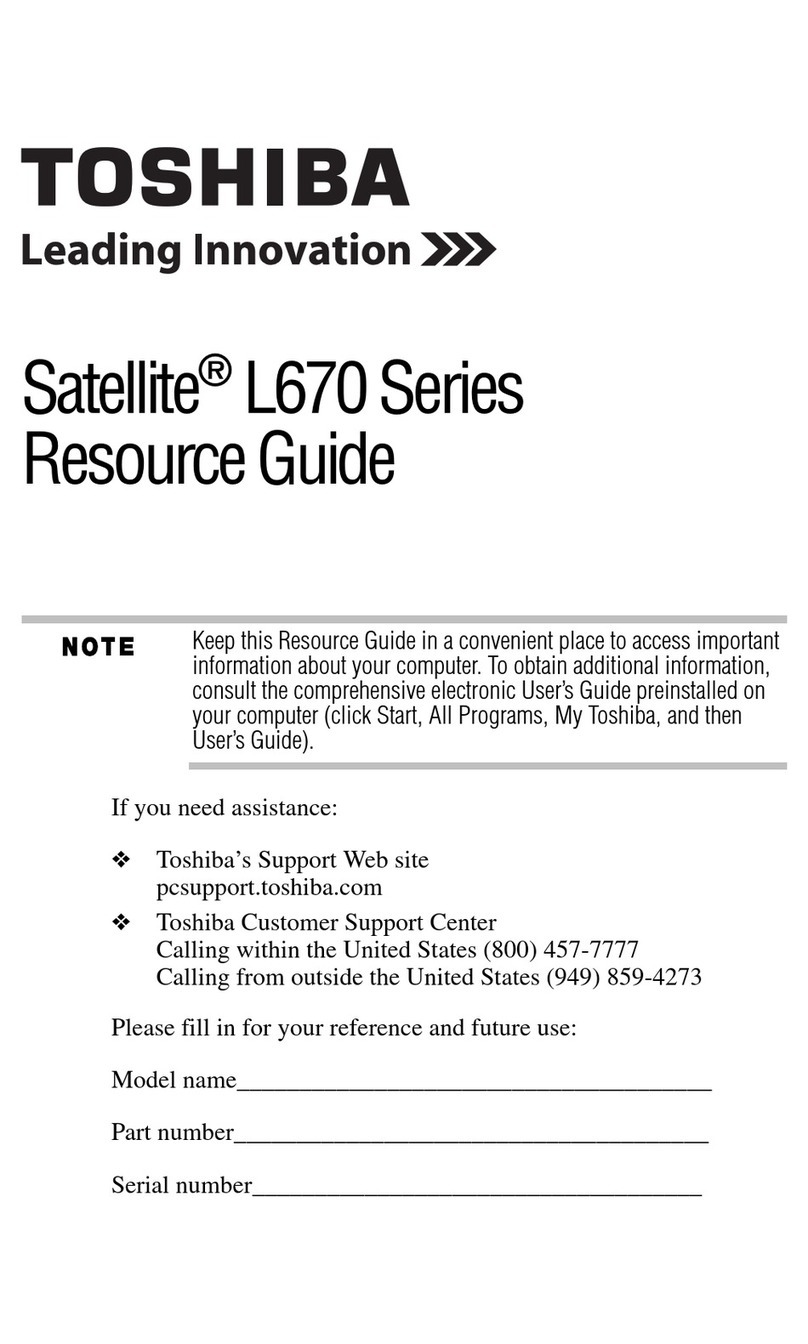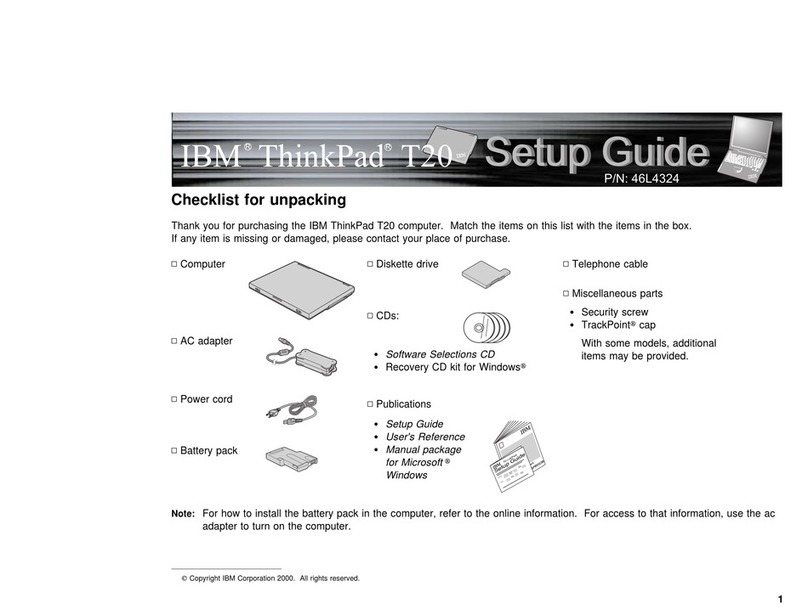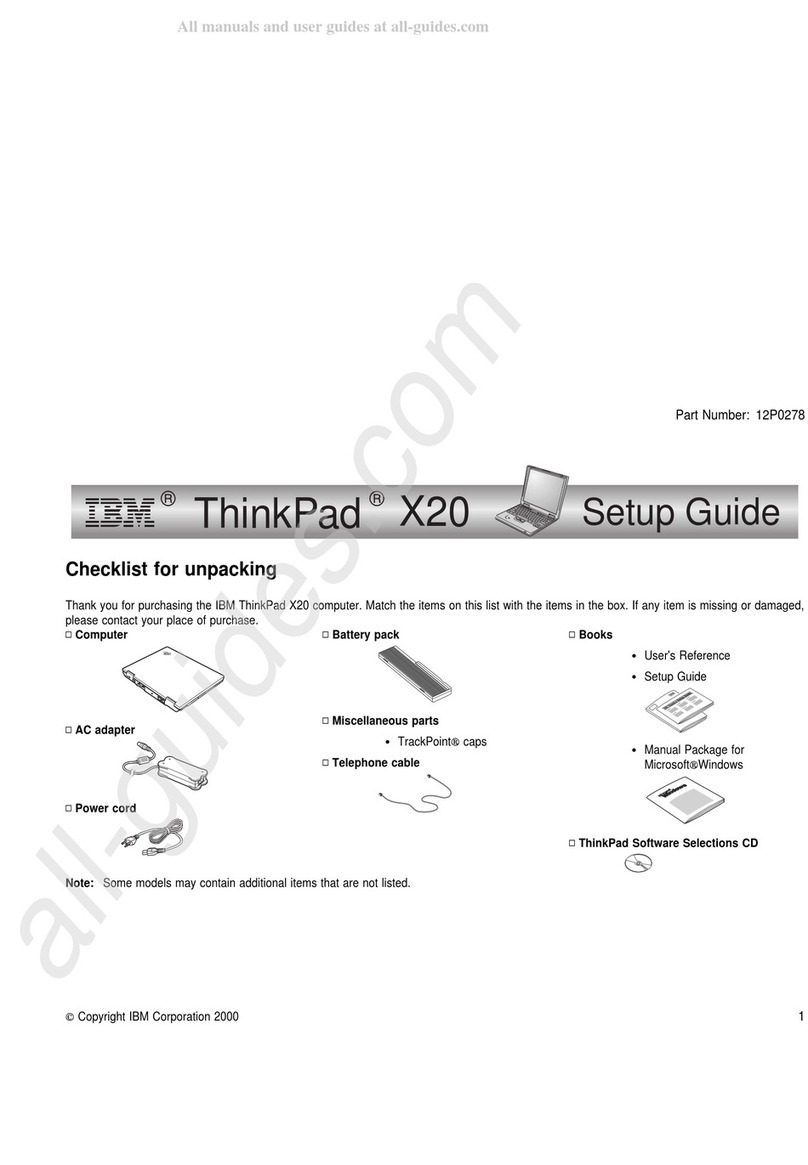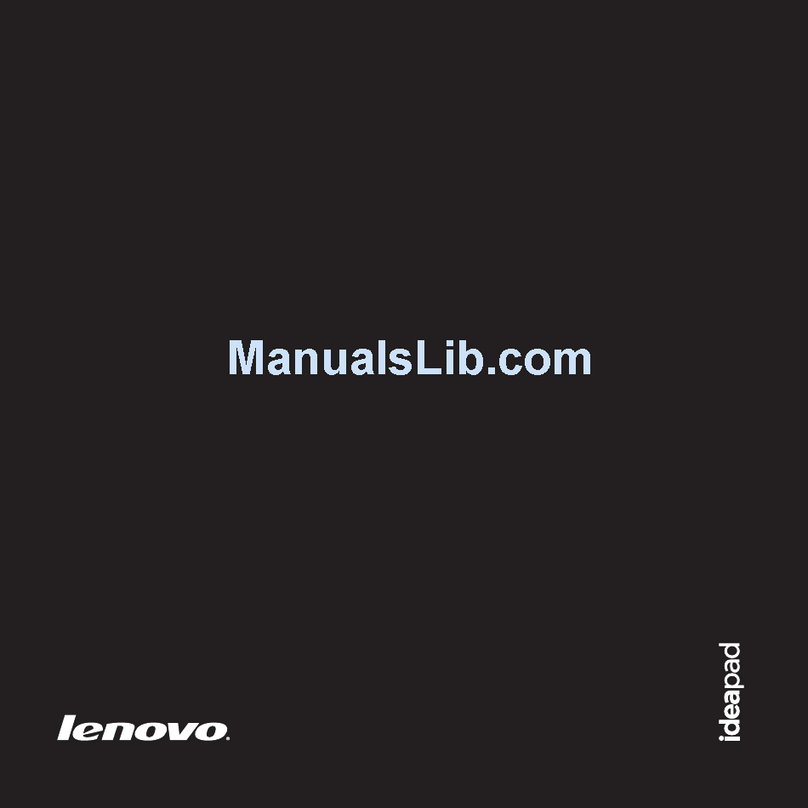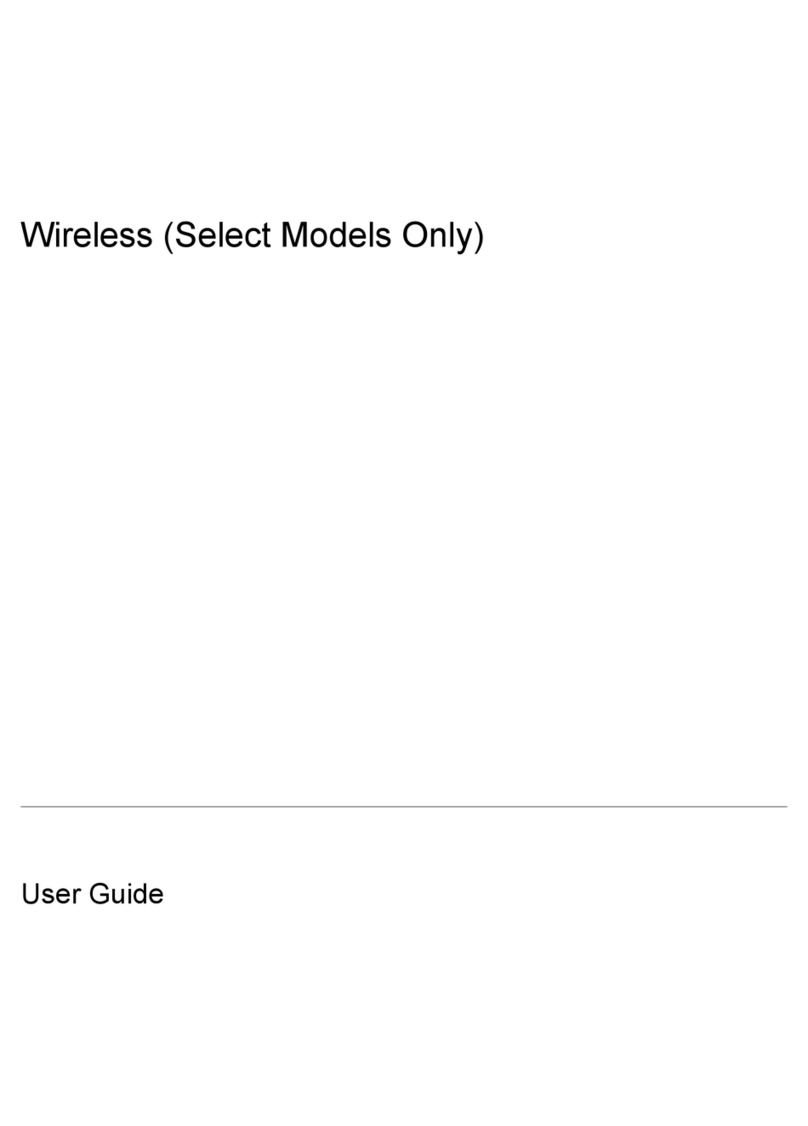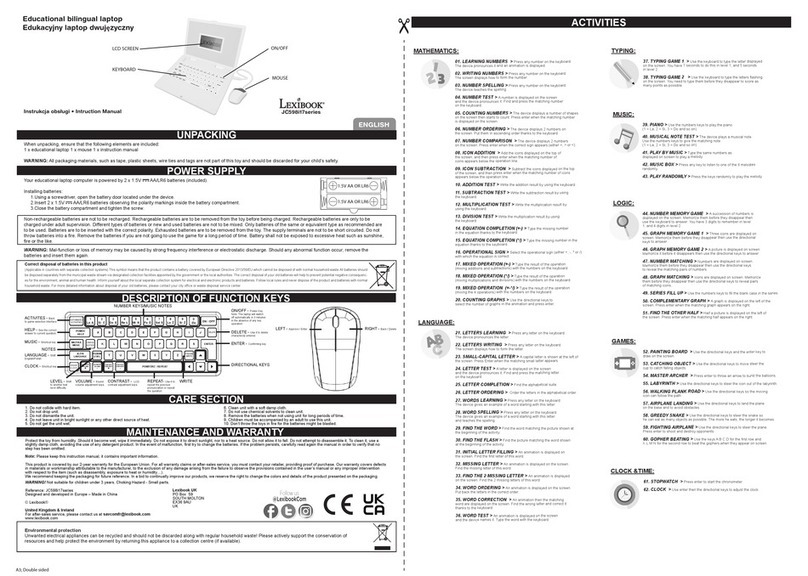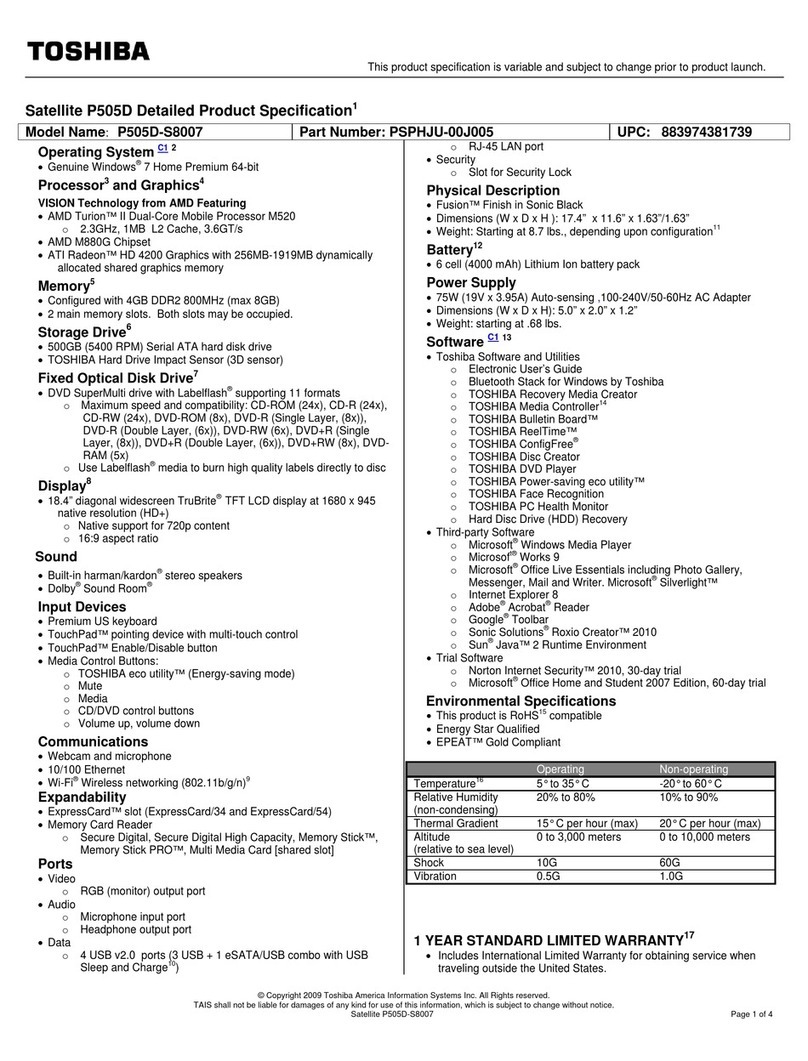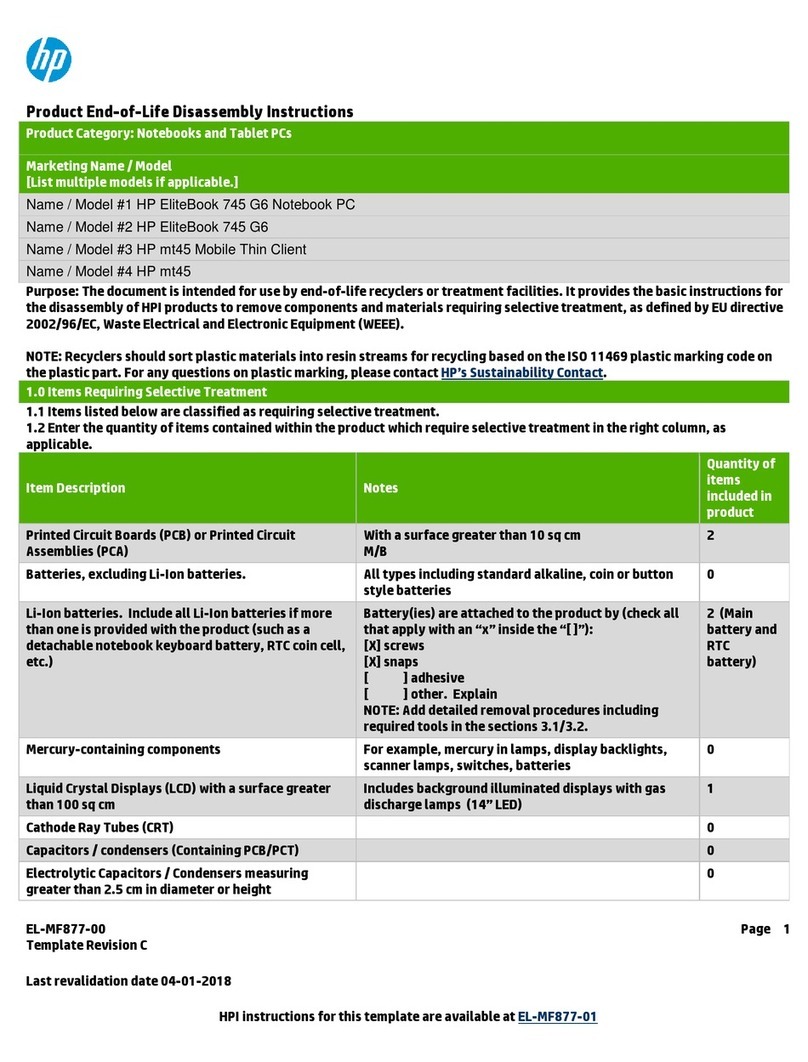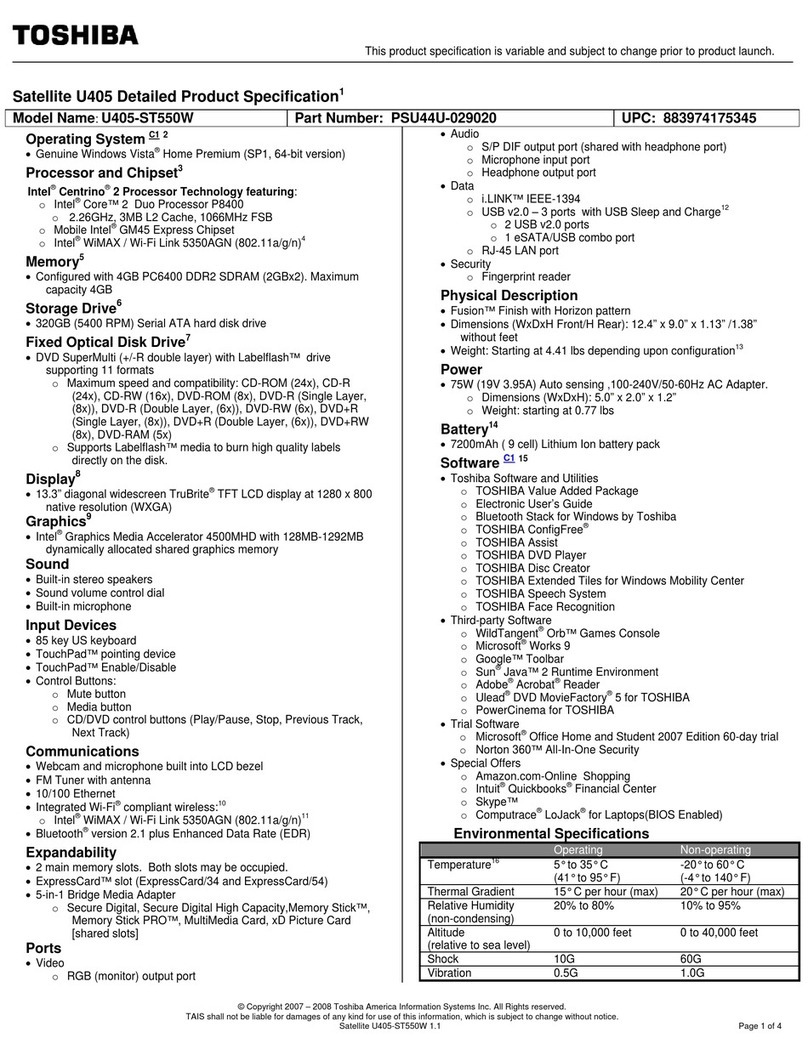Siemens Nixdorf PCD-4ND User manual

PCPC
PCD-4ND
PCD-5ND
The Intel Inside Logo is
a registered trademark
Operating Manual of Intel Corporation

PCD-4ND/PCD-5ND
Dieses Handbuch wurde auf Recycling-Papier gedruckt.
This manual has been printed on recycled paper.
Ce manuel est imprimé sur du papier recyclé.
Este manual ha sido impreso sobre papel reciclado.
Questo manuale è stato stampato su carta da reciclaggio.
Denna handbok är tryckt på recyclingpapper.
Dit handboek werd op recycling-papier gedrukt.
Published by
Siemens Nixdorf Informationssysteme AG
D-33094 Paderborn
D-81730 München
Order No.: A26391-K64-Z100-1-7619
Printed in the Federal Republic of Germany
AG 1295 12/95

Order information
Software with manuals
Please send your order to the address given on the order form. You must include
the order form supplied and the relevant documents.
Backup disks
The backup disks contain the software stored on your hard disk, when the PC is
delivered. Please order from your sales partner.
A26391-K64-Z100-2-7619

Is there ...
... any technical problem or other ... anything you want to tell us
question you need clarified? about this manual?
Please send us your comments quoting
Please contact: the order number of the manual.
– one of our IT Service Shops
– your sales partner Siemens Nixdorf Informationssysteme AG
– your sales office User Documentation Department
BS2000 OS ID 4, Otto-Hahn-Ring 6,
You will find the addresses of the D-81730 München, Germany
IT Service Shops in the enclosed
warranty coupon booklet. Fax: ++49 89 / 6 36-4 04 43

Introduction
Important notes
PCD-4ND Preparation for use
PCD-5ND
Operation
System configuration
System expansion
Operating Manual
Troubleshooting
System specifications
Index
December 1995 edition

Your training needs . . .
The Siemens Nixdorf Training Centers offer you a wide range of
training courses in information technology and on IT products and
other subjects - onsite near to your workplace or offsite at one of our
training centers.
Contact us for information on consulting, course schedules and
selfstudy material.
Please write or fax:
Siemens Nixdorf Informationssysteme AG
Training Center, Beratungsservice
D-81730 München
Fax.: ++49 89 / 636-42945
DPMS and VESA are registered trademarks of Video Electronics Association
Intel and Pentium are registered trademarks and i486 SX, i486 DX2 and i486 DX4 are
trademarks of Intel Corporation, USA.
Microsoft, MS, MS-DOS and Windows are registered trademarks and Windows NT is a
trademark of Microsoft Corporation.
OS/2 and PS/2 Windows are registered trademarks of International Business Machines, Inc.
All other trademarks referenced are the trademarks or registered trademarks of their
respective owners, whose protected rights are acknowledged.
Copyright Siemens Nixdorf Informationssysteme AG 1995.
All rights, including rights of translation, reproduction by printing, copying or similar methods,
even of parts are reserved.
Offenders will be liable for damages.
All rights, including rights created by patent grant or registration of a utility model or design,
are reserved.
Delivery subject to availability; right of technical modifications reserved.

Contents
Introduction 1
Notational conventions 2
Important notes 3
Safety 3
Manufacturer's notes 5
Note on RFI suppression 5
Energy saving 6
Optimum battery capacity 6
On the move with the notebook 6
Class B 7
Important notice concerning power cord selection 8
For the United States and Canada 8
For the United Kingdom 10
Preparation for use 11
Unpacking and checking the notebook 11
Connecting the power supply unit 12
Installing the operating system 13
Creating utility disks 15
Installing application programs and drivers 15
Operation 17
Choosing where to set up your notebook 17
Switching on the notebook 18
Switching off the notebook 18
Using floppy disks 19
Write-protecting floppy disks 19
Displays and input devices 20
Displays 20
Keyboard 22
Key combinations 25
Trackball and trackball buttons 28
Internal microphone and internal loudspeaker 28
Using the power-management features 29
Enabling the Long Life mode 29
Enabling Low Power mode 29
Enabling Doze mode 30
Enabling Standby mode 30
Enabling Suspend mode 31
A26391-K64-Z100-2-7619

Contents
Switching off the display 32
Enabling the hard disk's power-management feature 32
Disabling the system speaker 32
Changing display settings 33
Setting the gray scales for the monochrome display 33
Switching between normal and reverse video 33
Switching between internal and external displays 33
Setting the display contrast 34
Setting the display brightness 34
Volume adjustment 34
Using the security features 35
System Lock 35
Keyboard Lock 35
Setup Lock 36
Restricting access to the docking unit 36
Preventing the notebook from booting from floppy disk 36
Preventing write operations to floppy disk 36
Preventing write operations to PCMCIA cards 37
Locking the serial port 37
Locking the parallel port 37
The battery 38
Charging the battery 38
Inserting and removing batteries 41
Deep-discharging/recharging the battery 45
Cleaning the notebook 46
Rebuilding the hard disk 47
Code table for the standard character set 48
System configuration 49
Starting the Setup program 50
Using the Setup program 51
Changing the system settings - System Setup 52
Display settings - Video Setup 55
Setting up the security features - Security Setup 57
Setting up the power management features -
Power Management Setup 64
Configuring the docking unit - Docking Unit Setup 68
A26391-K64-Z100-2-7619

Contents
System expansion 71
Adding/removing memory (PCD-4ND) 71
Adding/removing memory (PCD-5ND) 74
Installing and removing PCMCIA cards 77
Connecting external devices 80
Port covers and connectors 81
Connecting serial or parallel devices 82
Connecting an external display 82
Connecting a mouse 83
Connecting an external keyboard 83
Connecting a docking unit or station box 84
Connecting external audio devices 85
Transferring data with the infrared interface 85
Changing the keycaps 86
Troubleshooting 87
The POWER LED does not light up when the notebook is switched on 87
The notebook's display remains blank 88
The notebook's display is difficult to read 89
The external display remains blank 89
The external display is blank or the image is unstable 90
The notebook seems to have locked up (crashed) 91
The trackball does not respond 91
The mouse does not respond 92
The notebook will not write to floppy disk 92
The battery drains quickly or becomes hot 93
The PC's date or time is incorrect 93
The printer does not print 93
The battery symbol is flashing 94
Acoustic warnings 94
On-screen error messages 95
System specifications 99
Notebook PCD-4ND 99
Notebook PCD-5ND 100
Power supply unit 102
Battery 102
I/O addresses, interrupts and DMA channels 103
A26391-K64-Z100-2-7619

Contents
Pin assignment 104
DC input connector 104
Port for external keyboard and PS/2 mouse 104
Serial port 105
Port for external display 106
Parallel port 107
Keyboard layouts 108
Danish 108
French 108
German 109
Italian 109
Norwegian 110
Spanish 110
Swedish 111
Swiss 111
UK English 112
US English 112
Index 113
A26391-K64-Z100-2-7619

Introduction
This Operating Manual describes, among other things, how to set up, operate and
expand the PCD-4ND and PCD-5ND notebooks. Unless otherwise specified, the
information applies for both the PCD-4ND and the PCD-5ND.
Innovative technology and ergonomic design make this notebook the ideal user-
friendly and reliable travel companion. The MS-DOS operating system, Windows
for Workgroups and Software Utilities are pre-installed on the hard disk to facilitate
the procedure when you use your notebook for the first time.
The power-management SL-enhanced processor coupled with power-management
functions (APM = Advanced Power Management) ensure effective use of the
battery life of the notebook. The battery can be simply replaced or recharged using
the optional auto adapter should it drain while you are on the move. You can use
the notebook with an additional battery. To do so, you must change the built-in
floppy disk drive against the additional battery. This will double battery life in mobile
use. To allow you to utilize the optimum capacity of the battery, you should deep-
discharge and recharge it at regular intervals.
The PCD-4ND is equipped with a 4 MB main memory which can be upgraded to 8,
12 or 20 MB. The PCD-5ND is equipped with a 8 MB main memory which can be
upgraded to 16, 24 or 40 MB. Data is saved on an IDE hard disk drive. An external
disk drive can be connected to the parallel port of the notebook if you wish to work
with floppy disks. The notebook also features two PCMCIA slots for using PCMCIA
cards (types 1, 2 and 3). The drivers for PCMCIA cards are included on the
PCMCIA Utility floppy disk supplied.
Connections for external devices such as screen, printer and mouse are located on
the rear panel of the notebook. The PS/2 port recognizes the input device (e.g.
external keyboard, mouse) which has been connected. The parallel port (which
supports ECP and EPP modes) is designed to accommodate bi-directional data
transfer. In addition, the notebook has a connection port for a docking unit or a
station box. The notebook disposes of a infrared interface for wireless data
transfer.
An audio controller, a loudspeaker, a microphone and an audio connector provide
your notebook with an audio capability. You can thus incorporate voice, noise
effects and music into your PC environment. You can also connect an external
microphone and an external loudspeaker.
A26391-K64-Z100-2-7619 1

Introduction
The system settings of the notebook can be configured via the user-friendly Setup
program. Certain system settings (e.g. screen display, power-management
functions) can be modified via various key combinations while you are using the
notebook.
The notebook also features security functions to protect your data against
unauthorized access. Booting the operating system or access to the Setup program
can thus be protected by means of passwords.
For additional information on this notebook PC, refer to:
– INFO in MS Windows (utilities and drivers)
– the information files (e.g., *.DOC, *.TXT, *.WRI, *.HLP)
Notational conventions
The characters and typefaces used in this manual have the following meaning:
!Pay particular attention to texts marked with this symbol. Failure to observe
this warning endangers your life, destroys the system, or may lead to loss of
data.
describes additional information, hints and tips.
i
indicates an operational step which you should carry out.
indicates that you must enter a blank.
↵ indicates that you must press the Enter key after the characters you have
entered.
Text in a typewriter font represents screen output.
Text in a bold typewriter font has to be typed at the keyboard.
Text in italics denotes commands or menu options.
"Quotation marks" indicate special emphasis and chapter names.
2A26391-K64-Z100-2-7619

Important notes
In this chapter you will find information regarding safety which it is essential to take
note of with your notebook. The chapter also contains information on the licenses
issued for your notebook.
Safety
This device complies with the relevant safety regulations for data processing
equipment, including electronic office machines for use in an office environment. If
you have any questions, contact your sales office or our customer service.
– Always use the bag supplied when transporting the notebook.
If it needs to be shipped, use the original packaging or other suitable packaging
to protect it from damage through mishandling.
– If the device is brought into the installation site from a cold environment,
condensation can form. Before operating the device, wait until it is absolutely
dry and has reached approximately the same temperature as the installation
site.
– Read the information on environmental conditions before setting up and using
the notebook (see the sections "Preparation for use" and "System
specifications").
– Only run the notebook off the battery or power supply unit included, or off
authorized accessories (car adapter, docking unit or station box).
– The power supply unit has a specially approved power cable and must only be
connected to a grounded wall outlet. If the power adapter is connected to the
grounded wall outlet, it must be free-standing. The power adapter may not be
covered while it is in operation. Do not stand it on heat-sensitive material.
– Ensure that the power socket on the power supply unit or the grounded wall
outlet is freely accessible.
– The power switch does not disconnect the device from the line voltage. To do
this, you must pull out the power plug.
– Lay all cables so that nobody can stand on them or trip over them. When
attaching the PC, observe the relevant notes in the chapter "System expansion".
– No data transmission cable should be connected or disconnected during a
thunderstorm.
A26391-K64-Z100-2-7619 3

Important notes
– Please ensure that no objects (e.g., necklaces, paperclips etc.) or liquids can
get into the interior of the device (electrical shock, short circuit).
– In emergencies (e.g. damaged casing, elements or cables, penetration of liquids
or foreign matter), switch off the notebook immediately, remove the power
connector, remove the battery, and contact your sales office or customer
service.
– Only qualified technicians may repair the device. Unauthorized opening or
incorrect repair may greatly endanger the user (electric shock, fire risk).
– When cleaning the system unit, observe the relevant notes in the chapter
"Operation".
– Install only system expansions that satisfy the requirements and rules governing
safety and electromagnetic compatibility and relating to telecommunications
terminal equipment. If you install other expansions, you may damage the
system or violate the safety regulations and regulations governing RFI
suppression. Information on which system expansions are suitable can be
obtained from the customer service or your sales office.
– You may use the battery only for this PC.
Take care not to drop the battery or otherwise damage its housing (risk of fire).
If the battery fails, do not use it in the notebook.
Never interconnect the positive and negative terminals of the battery.
Used batteries must be disposed of in accordance with local regulations (special
refuse).
– If the LCD display is damaged (e.g. glass broken), do not allow any escaping
liquid to come into contact with skin, mucous membranes (eyes, mouth). Do not
inhale vapors.
Clean parts of the body and clothing that have already come into contact with
such liquids with plenty of water and soap.
– The warranty expires if the notebook is damaged during the installation or
replacement of system expansions.
– You may set only those resolutions and refresh rates specified in the chapter
"System specifications" or in the operating manual of the monitor description.
Otherwise you may damage your monitor. If you are in any doubt, contact your
sales office or customer service.
– The notebook includes a lithium battery which may be replaced only by
authorized personnel. Incorrect handling may lead to a risk of explosion.
The lithium battery may be replaced only with an identical battery or with a type
recommended by the manufacturer. The battery must be disposed of in
accordance with local regulations concerning special waste.
4A26391-K64-Z100-2-7619

Important notes
For Denmark
ADVARSEL
Lithiumbatteri - Eksplosionsfare ved fejlagtig håndtering. Udskiftning må kun
ske med batteri af samme fabrikat og type. Lever det brugte batteri tilbage til
leverandøren.
For Norway
ADVARSEL
Eksplosjonsfare ved feilaktig skifte av batteri. Benytt samme batteritype eller en
tilsvarende type anbefalt av apparatfabrikanten. Brukte batterier kasseres i
henhold til fabrikantens instruksjoner.
For Sweden
VARNING
Eksplosionsfara vid felaktigt batteribyte. Använd samma batterityp eller en
ekvivalent typ som rekommenderas av apparattillverkarenfabrikanten. Kassera
använt batteri enligt fabrikantens instruktion.
For Finland
VAROITUS
Paristo voi räjähtää, jos se on virheellisesti asennettu. Vaihda paristo
ainoastaan laitevalmistajan suosittelemaan tyyppiin. Hävitä käytetty paristo
valmistajan ohjeiden mukaisesti.
Manufacturer's notes
If there is a CE symbol on the device, then:
The device complies with the requirements of the EEC directive
89/336/EEC with regard to "Electromagnetic compatibility".
Note on RFI suppression
All other devices connected to this product must have RFI suppression in
accordance with EC directive 89/336/EEC. Products meeting these requirements
are accompanied by a certificate issued by the manufacturer and carry the
CE symbol.
A26391-K64-Z100-2-7619 5

Important notes
Energy saving
Make use of the notebook's power management features (see "Operation").
The notebook uses less power when the power management features are enabled.
You will then be able to work for longer before having to recharge the battery.
Optimum battery capacity
To allow you to utilize the optimum capacity of the battery, you should deep-
discharge and recharge it at regular intervals (see the chapter entitled "Operation -
Deep-discharging/recharging the battery)
On the move with the notebook
Please observe the points listed below when transporting your notebook PC.
Transporting the notebook
– Do not carry the notebook by its open screen or by its battery compartment if
the battery is removed.
– Switch the notebook off and close the LCD display and the covers for the ports
and the PCMCIA cards.
– Use the bag supplied to transport the notebook.
If it needs to be shipped, use the original packaging or other suitable packaging
to protect it from damage through mishandling.
– Protect the notebook from severe shocks and extreme temperatures (e.g., direct
sunlight in a car).
Before starting the journey
– Copy important data from the hard disk to a floppy disk.
– If you wish to use your notebook during a flight, check first with the flight
attendants if it is permissible to do so.
– If you are travelling abroad, ensure that the power supply unit can be operated
on the local mains voltage. If this is not the case, obtain the appropriate power
supply unit for your notebook.
Do not use any other voltage transformers!
6A26391-K64-Z100-2-7619

Important notes
Class B
The following statement applies to the products covered in this manual, unless
otherwise specified herein. The statement for other products will appear in the
accompanying documentation.
NOTE:
This equipment has been tested and found to comply with the limits for a "Class B"
digital device, pursuant to Part 15 of the FCC rules. These limits are designed to
provide reasonable protection against harmful interference in a residential
installation. This equipment generates, uses and can radiate radio frequency
energy and, if not installed and used in strict accordance with the instructions, may
cause harmful interference to radio communications. However, there is no
guarantee that interference will not occur in a particular installation. If this
equipment does cause harmful interference to radio or television reception, which
can be determined by turning the equipment off and on, the user is encouraged to
try to correct the interference by one or more of the following measures:
– Reorient or relocate the receiving antenna.
– Increase the separation between equipment and the receiver.
– Connect the equipment into an outlet on a circuit different from that to which the
receiver is connected.
– Consult the dealer or an experienced radio/TV technician for help.
Siemens Nixdorf Informationssysteme AG is not responsible for any radio or
television interference caused by unauthorized modifications of this equipment or
the substitution or attachment of connecting cables and equipment other than
those specified by Siemens Nixdorf Informationssysteme AG. The correction of
interferences caused by such unauthorized modification, substitution or attachment
will be responsibility of the user.
The use of shielded I/O cables is required when connecting this equipment to any
and all optional peripheral or host devices. Failure to do so may violate FCC rules.
This digital apparatus does not exceed the Class B limits for radio noise emissions
from digital apparatus as set out in the interference-causing equipment standard
entitled "Digital Apparatus", ICES-003 of the Canadian Department of
Communications.
Cet appareil numérique respecte les limites de bruits radioélectriques applicables
aux appareils numériques de Classe B prescrites dans la norme sur le matériel
brouilleur: "Appareils Numériques", NMB-003 édicté par le ministre des
Communications du Canada.
A26391-K64-Z100-2-7619 7

Important notes
Important notice concerning power cord
selection
The power cord for this unit has been packed separately and has been selected
according to the country of destination. It must be used to prevent electric shock.
Use the following guidelines if it is necessary to replace the original cord set.
The female receptacle of the cord set
must meet CEE-22 requirements (see
Figure 1).
For the United States and Canada
Use a UL listed and CSA labelled cord set consisting of a three conductor cord with
a maximum length of 15 feet.
For units which stand on a desk or table, type SVT or SJT cord sets shall be used.
For units which stand on floor, only SJT type cord sets shall be used.
The cord set must be selected according to the current rating for your unit. Please
consult Table A for the selection criteria for power cords used in the United States
and Canada.
8A26391-K64-Z100-2-7619

Important notes
Table A:
Cord Type Size of Conductors Maximum Current
in Cord Rating of Unit
SJT 18 AWG 10 Amps
16 AWG 12 Amps
14 AWG 12 Amps
SVT 18 AWG 10 Amps
17 AWG 12 Amps
For units set at 115 V:
use a parallel blade, grounding type attachment plug rated 15 A, 125 V (Figure 2).
For units set at 230 V (domestic use):
use a tandem blade, grounding type attachment plug rated 15 A, 250 V (Figure 3).
For units set at 230 V (outside of the United States and Canada):
use a cord set consisting of a minimum AWG according to Table A and a
grounding type attachment plug rated 15 A, 250 V. The cord set should have the
appropriate safety approvals for the country in which the equipment will be installed
and should be marked HAR.
A26391-K64-Z100-2-7619 9

Important notes
For the United Kingdom
Should the plug on the flexible cord not be of the type for your socket outlets, do
not use an adapter but remove the plug from the cord and discard. Carefully
prepare the end of the supply cord and fit a suitable plug.
WARNING
THIS APPLIANCE MUST BE EARTHED
IMPORTANT
The wires in this mains lead are coloured in accordance with the following code:
Green and Yellow: Earth
Blue: Neutral
Brown: Live
As the colours of the wires in the mains lead of this appliance may not correspond
with the coloured markings identifying the terminals in your plug, proceed as
follows:
– The wire which is coloured Green and Yellow must be connected to the terminal
in the plug which is marked with the letter E or by the earth symbol or coloured
Green or Green and Yellow.
– The wire which is coloured Blue must be connected to the terminal which is
marked with the letter N or coloured Black.
– The wire which is coloured Brown must be connected to the terminal which is
marked with the letter L or coloured Red.
10 A26391-K64-Z100-2-7619
This manual suits for next models
1
Table of contents
